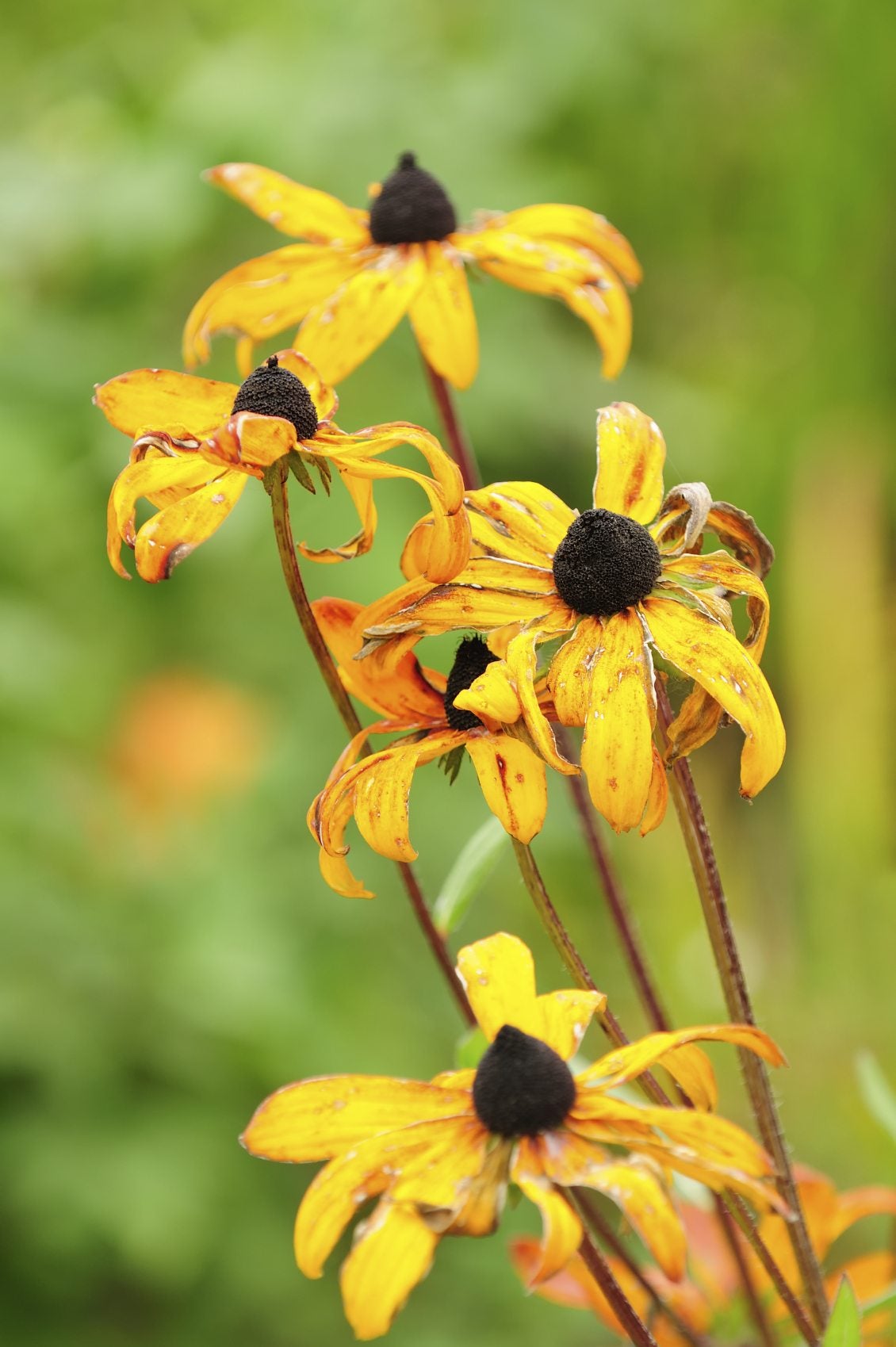Guide To Rudbeckia Deadheading – How To Deadhead Black Eyed Susans


It’s an age-old tale in the garden, you planted one cute little Black-Eyed Susan in a perfect spot. Then a couple of seasons later, you have hundreds of little ones popping up everywhere. This can be maddening for the tidy, organized gardener. Read more to learn how to deadhead Black-Eyed Susans for control, as well as the pros and cons of cutting blooms on Rudbeckia plants.
Do You Deadhead Black Eyed Susans?
Deadheading Black-Eyed Susan flowers is not necessary but can prolong the blooming period and prevent the plants from seeding all over your landscape. There are about twenty-five native species of Rudbeckia blanketing fields and meadows across North America. In nature, they efficiently go about their business of providing food and shelter for butterflies, other insects, birds, and small animals while self-sowing new generations of Black-Eyed Susan plants. Left to grow wild, Rudbeckias are visited throughout the blooming season by pollinators and butterflies like fritillaries, checkerspots, and swallowtails. In fact, Silver checkerspot butterflies use Rudbeckia laciniata as a host plant. After the blooms fade, the flowers turn to seed, which goldfinches, chickadees, nuthatches, and other birds feed on throughout the fall and winter. Colonies of Black-Eyed Susans also provide shelter for beneficial insects, small animals, and birds.
Cutting Blooms on Rudbeckia
While wildflower gardens are great little habitats for birds, butterflies, and bugs, you don’t always want all that wildlife right next to your front door or patio. Black-Eyed Susan can add beautiful and durable splashes of yellow to the landscape, but their seed will happily sow itself everywhere if not deadheaded. Cut off faded and wilted Black-Eyed Susan blooms throughout the growing season to keep the plant tidy and in control. Rudbeckia deadheading is easy: On Rudbeckia, which grows a single flower on each stem, cut the stem back to the base of the plant. For Rudbeckias with multiple flowers on a stem, just snip off the spent blooms. In autumn, cut Black-Eyed Susan back to about 4 inches tall (10 cm.) or, if you wouldn’t mind a few more Black-Eyed Susan plants, let the last blooms go to seed for the birds. The seed heads can also be cut and dried to propagate new plants.
Sign up for the Gardening Know How newsletter today and receive a free copy of our e-book "How to Grow Delicious Tomatoes".

Darcy is a former contributor to Gardening Know How. She is a professional landscape designer and gardening writer with experience in plant sales. An avid gardener, Darcy has a passion for sharing practical tips to help others grow.